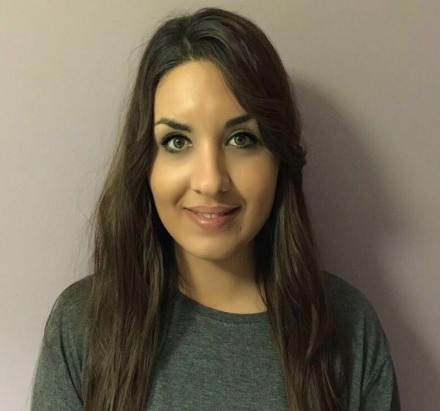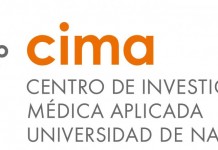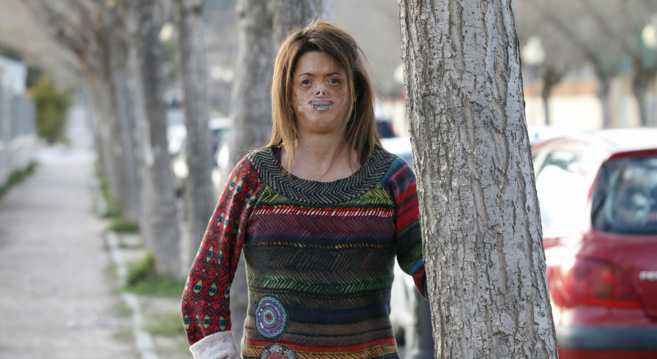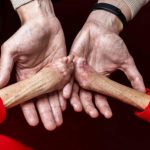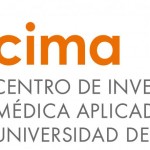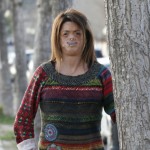CEO Q&A: SCENESSE® (afamelanotide 16mg) in Europe May 9, 2016 European availability of SCENESSE® (afamelanotide 16mg)1 Jeroen Verheul: When will the drug be available and which steps have to be made in order to make it available – from Clinuvel and from the public authorities? Philippe Wolgen: The regulatory approval, release of a drug per country, and availability of the treatment reflect three distinct processes. As a recap, SCENESSE® obtained approval from the European Medicines Agency (EMA) in October 2014 and ratification by the European Commission three months later. Then the EMA handed over the SCENESSE® dossier to the subcommittee PRAC, which oversaw a post‐authorisation safety protocol. This process was conducted from February 2015 to March 2016, during which time PRAC reviewers – some of whom had been involved in the scientific review – posed questions as to the effectiveness and safety of the drug. These discussions were futile, superfluous and beyond the remit of the PRAC’s mandate: the EMA had already voted in October 2014 on a positive benefit‐risk balance of SCENESSE®, allowing the drug to obtain the historical European approval. Not only had the PRAC reviewers reopened a discussion in an attempt to design a protocol to prove efficacy of the drug, they embarked on this mission outside their competence and mandate. The goal was not a post‐authorisation efficacy study (PAES), but a safety requirement to follow up patients life long, so called obligations for pharmacovigilance under protocol (PASS). There is another fundamental element in this regulatory review process which your readers may not realise: regulatory reviewers actually made decisions without consulting expert physicians who devote their entire professional lives to rare metabolic disorders. In Clinuvel’s case these reviewers – with no particular reason – also resisted during the seven year scientific review continuous offers to speak to physicians ‐ who were best placed to comment on the diseased patients ‐ and to interview the affected patients. The same applies for PRAC. Only after many persistent calls from Clinuvel, did the EMA finally agree to include the patients’ voice in their decision process. Our teams needed to arrive with an expert legal team at EMA’s doorstep to make the argument of the relevance of having patients included in a decision process of an unknown disease and novel drug as a legitimate part of the scientific evidence. In decades to come, patient inclusion in the EMA’s and FDA’s review processes will be part of standard approval considerations in pharmaceutical development. Clinuvel just had to break the wall and be the first company which had expert physicians and patients involved in the European decision process. Naturally, everyone learns along an uncharted journey. There has to be allowance for this in innovating, and this goes both for regulators and drug companies. However, where our teams differed and excelled was in involving porphyria patients and academic experts from the first day we developed the formulation and initiated the pharmaceutical therapy. During and after each trial we incessantly interrogated expert physicians and patients on whether Clinuvel really needed to continue the development program for SCENESSE® since there had been no scientific tools to measure or capture the effect of visible light on skin or the lack of characterisation of EPP. EPP is an enigmatic disorder, something to which can be addressed in our discussion later on. Actually there have been a few moments when the team was at the point of ceasing the development, but the clinical experiences from patients and physicians were so strong that we could not walk away. Clinuvel set itself apart from any other company which has developed an ‘orphan’ medication in that it needed to introduce a novel medical concept of endogenous protection against light, it needed to introduce the notion of a light affected population, and it needed to provide evidence of effectiveness, despite the lack of scientific instruments available to demonstrate the efficacy of a treatment against visible photon emission. In simple terms there is a cost to innovation, but we are close to complete success in all aspects.
The European regulators trailed modern drug development in rare disorders and refused to invite physicians and patients for years. Only at the very final end of the formal review ‐ after two years and two months of tedious regulatory review ‐ did they yield to Clinuvel’s demand. So, within this context I return to your question. Currently in a unified European Union – a political union rather than a fiscal or regulatory one – Clinuvel needs to obtain approval for educational patient material coming with the treatment in each individual country. And you guessed it right: the turnaround time is disproportionately long for what amounts to a few pages of review. Each European country attempts to duplicate the efforts in their own language with their own set of requirements. This will require time, Clinuvel cannot speed this up other than answering the questions coming our way and pressing agencies to understand the need for treatment in EPP. Then there is the payment and reimbursement of SCENESSE® in each individual country, which most often will require a formal assessment before the drug can be listed as an accepted innovative therapy. Again, there is no comparison to any other drug that provides an endogenous remedy against visible light (spectrum), an entire new concept. Reimbursement agencies will need to first understand the impact of light deprivation in humans. A lot is asked from these assessors. We will keep working at this and will not rest before each EPP patient in Europe and beyond has obtained access to SCENESSE®. The resilience of our teams is required. At the end of the regulatory interaction we asked ourselves whether there were positives to take away from the European review process. Placing emphasis on leadership, there must be some hope that Guido Rasi – the head of the EMA – will modernise an antiquated review system of ‘orphan’ drugs, since by definition the Agency will always trail specialist companies who surround themselves with the experts in the world. If he doesn’t succeed in overhauling this system, collectively we will not be able to compete on innovation with other emerging continents, with, let us say, Asia. Jeroen Verheul: What obligations do patients have to fulfil in order to obtain the treatment? What kind of data will be collected and can the patients opt out to do so? Philippe Wolgen: The EMA dictates that patients receiving the treatment will need to fill out diary cards every four weeks for one week, while quality of life questionnaires need to be completed regularly. In addition, patients will be expected to report every medical event during and after receiving the treatment, every cold, every flu and anything that occurs to them which is relevant to their health. These data will be recorded by physicians and their staff in electronic records, whereby the identity of patients is deleted and guaranteed. This is called pseudonymised data collection, conducted through a bespoke European EPP Disease Registry. Clinuvel initiated this and set it up. Simultaneously, Clinuvel will maintain a database containing safety and effectiveness data. From here onwards Clinuvel’s team and statisticians have the obligation to analyse these non‐identifiable data every six months and submit the findings to EMA and individual national competent authorities (regulatory agencies). Additionally, significant medical events – whether deemed related or not to the drug – will need to be filed by Clinuvel immediately to the authorities in each country where the patient resides. These future events may have an effect on the packaging information provided in the insert of SCENESSE® and its public safety profile, in other words the side effects. Once per year the company will need to analyse all medical data available through an annual report to EMA, while an additional burden is imposed on the company and physicians by having to analyse medical data from EPP patients who decide not to receive SCENESSE® treatment. We encourage EPP patients to remain disciplined in filling out forms, diary cards and various questionnaires. As to the question whether patients can opt out to comply with all these requirements. Yes, neither the company nor regulators can force patients to participate, however by retracting consent for medical data to be used for analyses, we as society will not obtain information on the long term safety of SCENESSE®. Jeroen Verheul: EMA tells patients that some demands might be lifted when more information is made available. Do you agree?
Philippe Wolgen: As stated above, the EMA has communicated that these measures are imposed indefinitely and we must submit data every 6 months and provide annual reports. We cannot provide for what some members of EMA say informally or not, since this Agency is represented by many different voices from different countries. We have no evidence to state that these measures will be lifted. Jeroen Verheul: How many implants can patients get per year? Philippe Wolgen: The prescribing information approved by the EMA states that a maximum of four injections per year are recommended, but it is up to the treating physician to make the assessment of the frequency of clinical dosing. In our trials we provided 4 to 6 injections per year. Clinuvel leaves up to the discretion of clinicians to determine the number of injections. Jeroen Verheul: Why is the drug so expensive? The high cost could prevent health insurers to reimburse. Philippe Wolgen: In posing this question a number of assumptions are made. The price has been submitted to a number of countries which will make it public in due course. The cost per treatment per year for SCENESSE® aimed at an ultra‐orphan indication will be one of the lowest in orphan medications (a novel therapy for a rare disease). That is, SCENESSE® is one of the cheapest drugs made available for a rare, severe disorder. Jeroen Verheul: The CHMP decided that the drug should be recommended for marketing authorisation under exceptional circumstances. What certainty do patients have on continuing availability? Philippe Wolgen: Exceptional circumstances relates to the lack of available scientific instruments and tools to measure the true effectiveness of the novel therapy offered by SCENESSE® in a group of patients diagnosed with the rare metabolic disorder. The continuing availability of the treatment will depend on the safety assessments year on year, meaning that a dramatic change in the safety profile of this drug could make us all rethink how safe the drug is. After two decades of testing in humans and animals, the evidence shows that SCENESSE® is well tolerated and has a positive safety profile for EPP patients. We are optimistic that SCENESSE® will be available for decades to come and exclusively through expert academic centres. Safety of SCENESSE® Jeroen Verheul: How safe is the drug really for patients, studies monitor users only a short period? Philippe Wolgen: To date the drug has been administered to approximately 1,000 individuals and patients, some of whom have been exposed to it for nearly a decade continuously. We have learned that the drug has a positive safety profile and most adverse expected reactions are moderate or mild in nature. Most common are headaches, nausea and gastrointestinal complaints the first 24 to 48 hours after injection and in a minority of patients. We encourage patients to contact their treating physician about any future complaints while on treatment and to read the appropriate safety information, copies of which are available on our website. Jeroen Verheul: This medicine may alter how patients live. How best to prepare them for new risks, for instance sunburn? Philippe Wolgen: This question has been raised in the past, and perhaps needs some explanation. EPP patients have an extraordinary sensory awakening which enables them to detect the initial rays along the visible spectrum of light. In simple terms EPP patients have a genetic warning system which make them retract from light
to avoid anaphylactoid reactions and second degree burns. Some have described it as a ‘sixth sense’, but what we refer to medically are ‘prodromal symptoms’. SCENESSE® silences this warning system and allows patients, for the first time in their lives, to expose their skin to visible light, but also UVB and UVA. Naturally there is now a risk that patients overexpose, overindulge in the ability to have an unrestricted life. Patients will need to time their exposure outside, gradually increase over a number of months and moderate. It is like anything else in life, too much is damaging but too little equals deprivation. Clinuvel will follow through the expert physicians by patients subjecting themselves twice per year to dermatology check‐ups. These check‐ups are part of the protocolised long term follow up. Jeroen Verheul: What is the effect of the drug on the liver? Philippe Wolgen: We have not seen that the drug has any effect on the liver function of patients. Jeroen Verheul: Women have to use effective birth control during treatment. What is the reason for that? Philippe Wolgen: It is not uncommon for novel treatment regimens to impose effective birth control on patients due to the lack of medical data on the safety of the drug in pregnant women. We want minimal risk for patients when we have not yet tested the drug during pregnancy. Jeroen Verheul: It seems unfair for patients to stop the treatment at the age of 70. People stop working at an older age. It seems inhuman to be thrown back at that stage of your life? Philippe Wolgen: There are no clinical data which dictate that patients over the age of 70 cannot receive SCENESSE®, and no restrictions in place from the company or agencies. However, individual assessments ultimately need to be made by the patient’s physician as to their suitability to receive the drug. Clinuvel asks that any patient over 70 undergoes medical check‐up and continuous monitoring (vital signs, blood and urine tests) in addition to the standard measures under the PASS protocol. Jeroen Verheul: Can you advise when the drug will be available for children with EPP? Philippe Wolgen: Children with EPP are most deserving of a treatment. It is quite unbelievable in this day and age that parents need to keep their children indoors during their childhood, and see the isolation and handicaps their children develop. By being involved in EPP for more than a decade, we all have been confronted by the meaning of life, and the significance and value of health. It is a journey in which one realises the fragility of one’s life. EPP is a genetic affliction mostly misunderstood and its impact underestimated; in society we seem not being able to attribute severity for something we cannot see or understand. Clinical experts, photobiologists and physicists knew long for a time of the impact of light starvation in humans. The regulators needed more than a decade. The disease is, for children and parents, nothing less than devastating. We will develop the paediatric formulation provided we can secure the funds for this development. It will take another three to four years, in my estimation. Jeroen Verheul: Can treatment with the drug on adults (and collecting new patient information) influence procedure for access for children? Philippe Wolgen:
Naturally, the data obtained from adult EPP patients will aid the development and understanding of the drug and disease course in children. That said, we need to be vigilant that we do no harm in adults or children; here the benefit of the treatment needs to outweigh uncertainty, but in time the pendulum will need to swing towards EPP children. The red line, or the analyses of the past decade to be made, is that Clinuvel’s teams persist in their mission and will not relinquish until all objectives have been met, and that included a product for children. For years we maintained a compassionate program in 8 countries providing the drug free of charge and collecting more data to serve later development of the product for children, In total we supplied more than 600 injections for 2 years free of charge after the completion of the drug trials, our compassion is significant. However now we are no longer in the financial position to supply the drug at subsidised level or free of charge. We are hopeful that the paediatric dose will be available in 4 years. It has been a pleasure answering your questions. ‐ End ‐ 1 SCENESSE® (afamelano








